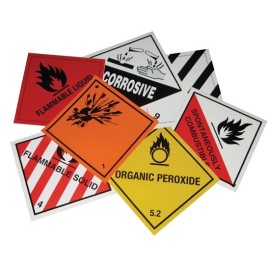Packaging of Dangerous Goods for Transport
If you trade in dangerous goods, you must comply with packaging requirements contained in the relevant legislation in order to transport goods safely. Hemsley Solutions is able to offer a full service from design to certification.
Packaging rules.
Packaging has to be designed and constructed to UN specification standards and must pass practical transport related tests such as being dropped, held in a stack and subjected to pressure demands. It must also meet the needs of the substance it is to contain. Packagings must be certified by a national competent authority.
UN approved packaging is marked with the prefix ‘UN’ and followed by codes that are listed in the relevant regulations relating to the national and international carriage of dangerous goods by road, rail, air and sea. The Vehicle Certification Agency (VCA) Dangerous Goods Office has responsibility for the certification of dangerous goods packaging within the UK. Packaging must also bear the correct label or labels for the substance in the package.
Enforcement of dangerous goods regulations:
Different authorities are responsible for enforcing the regulations for transport by road, air and sea.
Road.
The HSE, the Office for Nuclear Regulation and the Department for Transport, in conjunction with the police and the Vehicle and Operator Services Agency (VOSA), are the enforcement authorites in respect of compliance with the Carriage of Dangerous Goods and use of Transportable Pressure Equipment Regulations 2009 (as amended) covering road transport in Great Britain.
For international road movements, under the ADR European Agreement concerning the International Carriage of Dangerous Goods by Road, each national authority en route enforces its own requirements.
Air.
The CAA is the agency responsible for matters related to compliance for goods offered to airlines for carriage by air. The CAA currently receives around 600 dangerous goods incident reports a year.
Sea.
The Maritime and Coastguard Agency is the agency responsible for matters related to compliance for goods moving by sea.
Rail.
The HSE, the Office of Rail Regulation, the Office for Nuclear Regulation and the Department for Transport are the enforcement authorities in respect of compliance with the Carriage of Dangerous Goods and use of Transportable Pressure Equipment Regulations 2009 (as amended) covering rail transport in Great Britain.
Radiation screening at ports and airports.
Programme Cyclamen forms a key part of the government’s counter-terrorism strategy. It involves the screening of incoming freight, vehicles, passengers and pedestrians to detect and deter the illicit importation of radioactive and nuclear material by terrorists or criminals.
The programme is jointly managed by the Home Office and UK Borders Agency (UKBA). The Home Office has the lead responsibility for implementing the programme at ports and airports whilst UKBA is responsible for operating the equipment and for the initial detection of any imported radiological or nuclear material.
Countries including Finland, Russia and the USA use similar equipment and procedures.
How screening operates.
Fixed radiation detection equipment has been installed at ports and airports. There is also mobile capability supporting the fixed portals ensuring that air, sea and Channel Tunnel traffic entering the UK is subject to screening.
The equipment is entirely passive and is able to detect radiation emitted from the vehicle or object being examined. The equipment doesn’t emit radiation and there is no effect on any object or person passing through the detection system.
If an illicit source is suspected or found, specialist authorities will ensure that these incidents are dealt with quickly and safely, minimising the risk and inconvenience to the public.
Sources of radiation.
Some radioactive material may be carried legally by approved operators, whilst some foodstuffs, ceramics, and other items naturally emit radiation. In addition, a number of medical treatments emit radiation.
The screening equipment can identify a wide variety of radioactive sources and action is taken to ensure that legitimate importations can pass through quickly.



